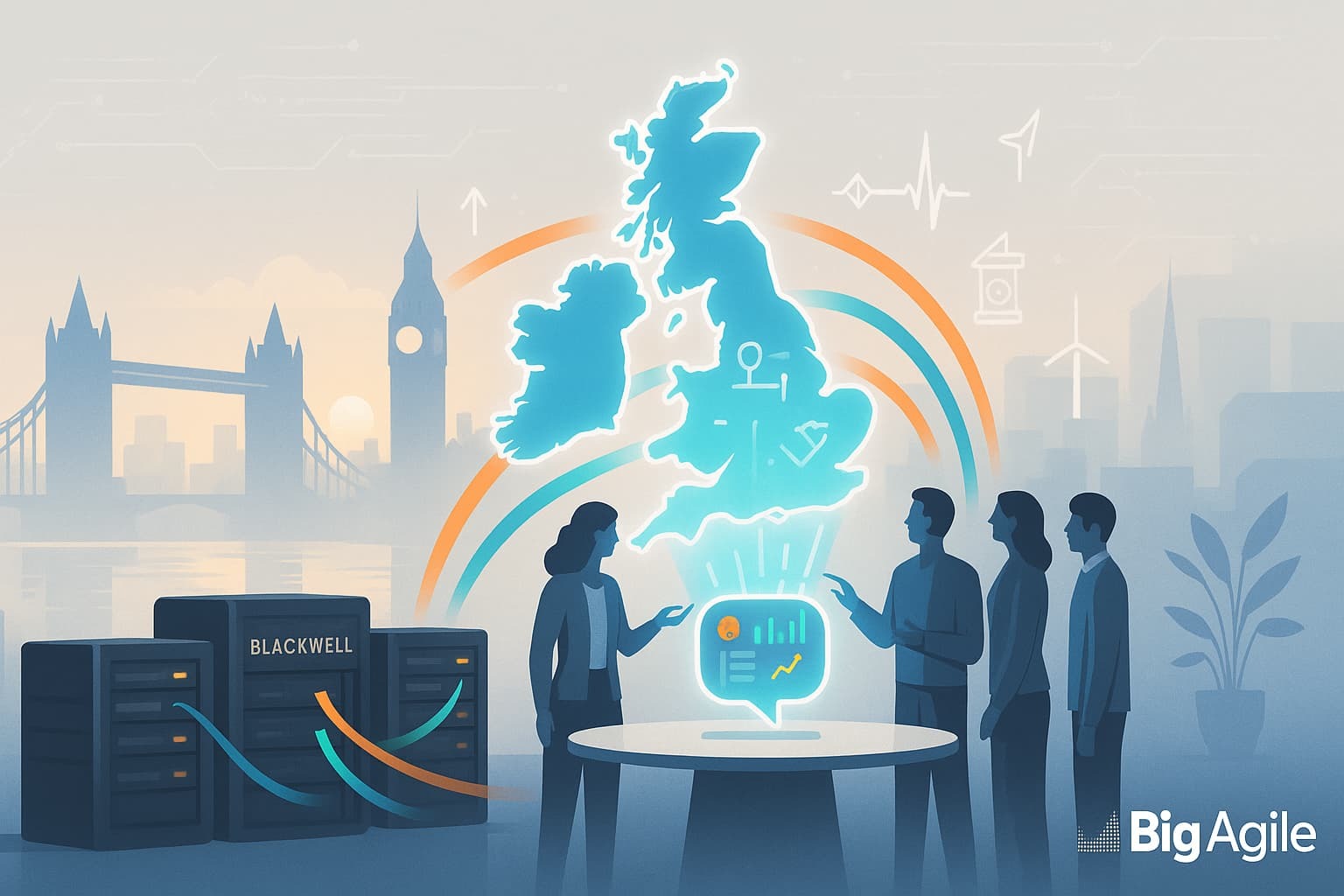
Did You Know?
Britain has just solidified its commitment to being an “AI maker, not an AI taker.” During London Tech Week, NVIDIA and a coalition of leading firms (Babcock, BAE, BT, National Grid, Standard Chartered) announced the U.K. Sovereign AI Industry Forum along with two domestic hyperscale builds: Nscale’s 10,000-GPU Blackwell data center (by 2026) and Nebius’s 4,000-GPU “AI factory.”
These facilities, operated on British soil and governed by U.K. law, form the foundation of what leaders call sovereign compute: AI-class processing power within national borders, under local governance, and close to critical data sources.
Why the urgency? An economic model released the same day indicates a modest increase in domestic AI data center capacity could contribute £5 billion a year to GDP, scaling up to £36.5 billion if access doubles. At the same time, NVIDIA is supporting a new AI Technology Center and enhancing Deep Learning Institute programs so British developers can effectively harness that silicon.
So What?
- Control your compute. Local silicon insulates companies from export bans, supply chain shocks, and transatlantic latency.
- Compliance by design. Keeping workloads and data within the U.K. simplifies GDPR, NHS IG, and sector-specific mandates.
- Vertical tailwinds. Early pilots cover 6G telecom R&D, FCA’s AI fintech sandbox, NHS diagnostic models, and climate risk twins.
- Economic ripple. Public-First’s £36 billion upside indicates that sovereign compute is a national productivity lever, not just an IT line item.
- Talent flywheel. Free or subsidized GPU hours and DLI training foster a startup and research boom, similar to MIT's Superminds thesis on human-AI collectives generating outsized value.
Now What
- Audit latency-sensitive workloads—fraud detection, recommendation loops, agentic ops and flag those that would benefit most from in-country GPUs.
- Join (or replicate) a coalition. Pool capex with peers to de-risk significant investments, share reference architectures, and influence emerging standards.
- Treat data like crude oil. Clean, label, and pipeline first-party data now; sovereign compute only pays off if the feed is properly refined.
- Launch a “skills guild.” Embed ADKAR change levers into NVIDIA DLI courses so new practices endure beyond the pilot team.
- Rewrite your competitive playbook. Map Porter forces in a world where domestic AI capacity is a defensible moat, then invest accordingly.
Questions for Leaders:
- Resilience: Which business-critical models fail if offshore GPU access is limited?
- Investment: What Opex-to-Capex mix allows us to secure capacity without stranding assets when architectures leapfrog?
- People: How will we assess progress on up-skilling beyond superficial course-completion metrics?
- Ecosystem: Which universities, startups, or regulators should be included in our own mini-forum to co-create domain datasets?
- Ethics & trust: Who is responsible for the duty of care when sovereign models train on sensitive citizen data?